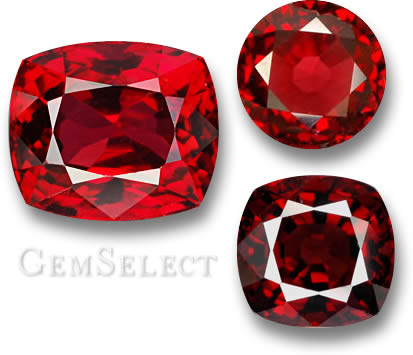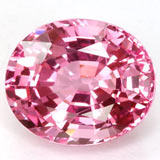The Secret of Spinel
Introduction

Spinel might not be a household name in the jewelry world, but it's winning over gem dealers and collectors left and right. You know, some folks even say it's a gem just for the true enthusiasts. So, what's got everyone in the know so excited about this stone?
Composition and Properties
Spinel is made up of magnesium aluminate, with colors coming from chromium and iron. It's pretty tough - rating an 8 on the Mohs scale - and it forms cubic crystals, much like diamond. You'll find spinel in octahedral crystals, and it has no cleavage at all, unlike diamond. Thanks to its excellent dispersion, spinel gems can show off some vivid fire. That intense color? Partly because spinel is singly refractive, while most gems are doubly refractive. The top singly refractive gems include diamond, spinel, and garnet.
Mining and Sources

Spinel forms as a contact metamorphic mineral in limestone and often turns up as rolled pebbles in sand and gravel deposits. These days, it's mainly mined in Burma (Myanmar), Sri Lanka, Tanzania, and Tajikistan, usually right alongside corundum like ruby and sapphire. Big stones are super rare; a ten-carat Burmese spinel is basically unheard of. Most Burmese spinel comes in under two carats, though we do spot some larger ones from Tanzania.
Colors and Value
The hottest colors for spinel are red, hot-pink, and flame-orange. Any spinel over two carats is a rarity. The top value goes to red or red-orange shades. One cool thing about spinel is its wide range of beautiful colors. For red spinel, the best hues are close to ruby - a rich, intense red like a stoplight. But spinel often leans a bit more brick-red than pure ruby-red. As with all gems, the most prized are those with a strong hue that's not too light or too dark.
Red spinel's value drops as the color shifts to light-pink or brownish-red. You'll also find it in deep-blue 'cobalt-blue', and softer tones like pink, violet, blue-green, silver, rose, bronze, and orange. There's even a black variety from Thailand and Australia.
Comparison to Ruby and Sapphire

Here's the big reveal: spinel holds its own against ruby and sapphire in many ways. Ruby edges it out slightly in hardness (9 on the Mohs scale), but spinel usually has fewer inclusions and packs more fire and brilliance. Plus, spinel isn't heated or treated - there's no known way to tweak its color or clarity. On the flip side, almost every affordable ruby gets some kind of treatment these days. Being singly refractive, spinel's red looks purer and more intense than in many rubies, which are doubly refractive. Yet, you can snag spinel for 20-50% less than ruby, making it a smart pick in a market where fine gem prices keep climbing.
Why Spinel Remains a Secret
So, why isn't spinel more famous and pricier? Simple: supply is tight, and the jewelry industry skips promoting what they can't stock reliably. It stays mostly a collector's gem. At GemSelect, we're fortunate to be near the prime Burmese sources, and our base in Chanthaburi is a key spot for cutting and trading Tanzanian spinel. Supply is limited, but we get better access than most dealers. Spinel's still under the radar, but it's one we're happy to let our customers in on.
Frequently Asked Questions
What is spinel composed of?
Spinel is made of magnesium aluminate, colored by chromium and iron.
Where is spinel primarily mined?
Spinel is mainly mined in Burma (Myanmar), Sri Lanka, Tanzania, and Tajikistan.
What are the most valuable colors of spinel?
The most sought-after colors are red, hot-pink, and flame-orange, with red or red-orange being the highest valued.
Is spinel treated like other gems?
No, spinel is never heated or treated; there is no known treatment to improve its color or clarity.
Why is spinel less known than ruby?
Supply is limited, so the jewelry industry doesn't promote it widely, keeping it as a collector's stone.

